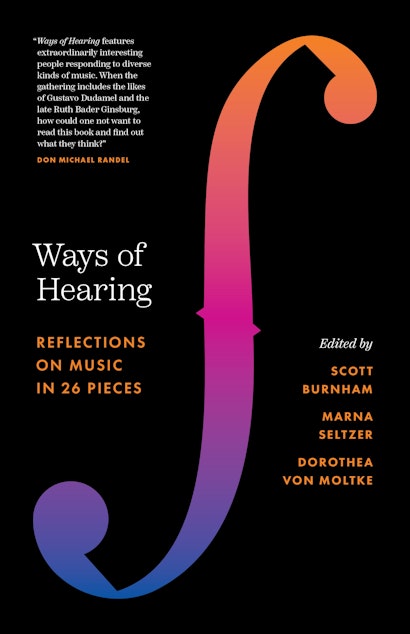World Listening Day honors the birthday of Canadian composer and environmentalist, Raymond Murray Schafer. Hosted each year by the World Listening Project, a nonprofit “devoted to understanding the world and its natural environment, societies, and cultures through the practice of listening and field recording,” World Listening Day is an opportunity for all of us to pause and hone our awareness of the world around us and practice the art of listening. From the voices of the natural world to the universal language of music, explore the mysteries of sound with these fascinating selections.
The natural world teems with remarkable conversations, many beyond human hearing range. Scientists are using groundbreaking digital technologies to uncover these astonishing sounds, revealing vibrant communication among our fellow creatures across the Tree of Life. At once meditative and scientific, The Sounds of Life shares fascinating and surprising stories of nonhuman sound, interweaving insights from technological innovation and traditional knowledge.
For the hermits and communal monks of antiquity, the desert was a place to flee the cacophony of ordinary life in order to hear and contemplate the voice of God. But these monks discovered something surprising in their harsh desert surroundings: far from empty and silent, the desert is richly reverberant. Sonorous Desert shares the stories and sayings of these ancient spiritual seekers, tracing how the ambient sounds of wind, thunder, water, and animals shaped the emergence and development of early Christian monasticism.
What is the meaning of a bird’s song, a baboon’s bark, an owl’s hoot, or a dolphin’s clicks? In The Voices of Nature, Nicolas Mathevon explores the mysteries of animal sound. Putting readers in the middle of animal soundscapes that range from the steamy heat of the Amazon jungle to the icy terrain of the Arctic, Mathevon reveals the amazing variety of animal vocalizations. He describes how animals use sound to express emotion, to choose a mate, to trick others, to mark their territory, to call for help, and much more. What may seem like random chirps, squawks, and cries are actually signals that, like our human words, allow animals to carry on conversations with others.
Join birdsong expert Donald Kroodsma on a ten-week, ten-state bicycle journey as he travels with his son from the Atlantic to the Pacific, lingering and listening to our continent sing as no one has before. On remote country roads, over terrain vast and spectacular, from dawn to dusk and sometimes through the night, you will gain a deep appreciation for the natural symphony of birdsong many of us take for granted. Come along and marvel at how expressive these creatures are as Kroodsma leads you west across nearly five thousand miles—at a leisurely pace that enables a deep listen.
In 1977 NASA shot a mixtape into outer space. The Golden Record aboard the Voyager spacecrafts contained world music and sounds of Earth to represent humanity to any extraterrestrial civilizations. To date, the Golden Record is the only human-made object to have left the solar system. Alien Listening asks the big questions that the Golden Record raises: Can music live up to its reputation as the universal language in communications with the unknown? How do we fit all of human culture into a time capsule that will barrel through space for tens of thousands of years? And last but not least: Do aliens have ears?
What happens when extraordinary creative spirits—musicians, poets, critics, and scholars, as well as an architect, a visual artist, a filmmaker, a scientist, and a legendary Supreme Court justice—are asked to reflect on their favorite music? The result is Ways of Hearing, a diverse collection that explores the ways music shapes us and our shared culture. These acts of musical witness bear fruit through personal essays, conversations and interviews, improvisatory meditations, poetry, and visual art. They sound the depths of a remarkable range of musical genres, including opera, jazz, bluegrass, and concert music both classical and contemporary.






